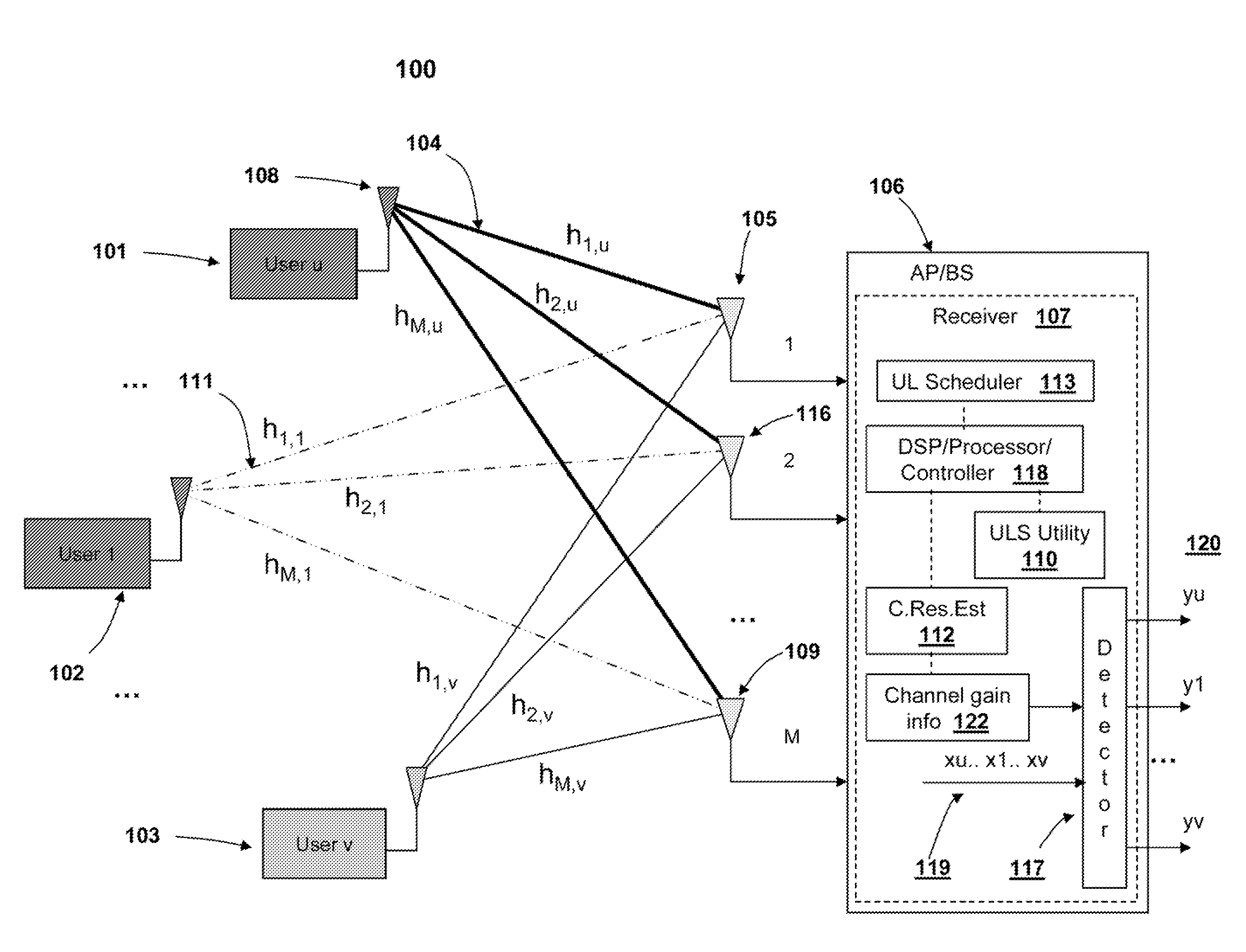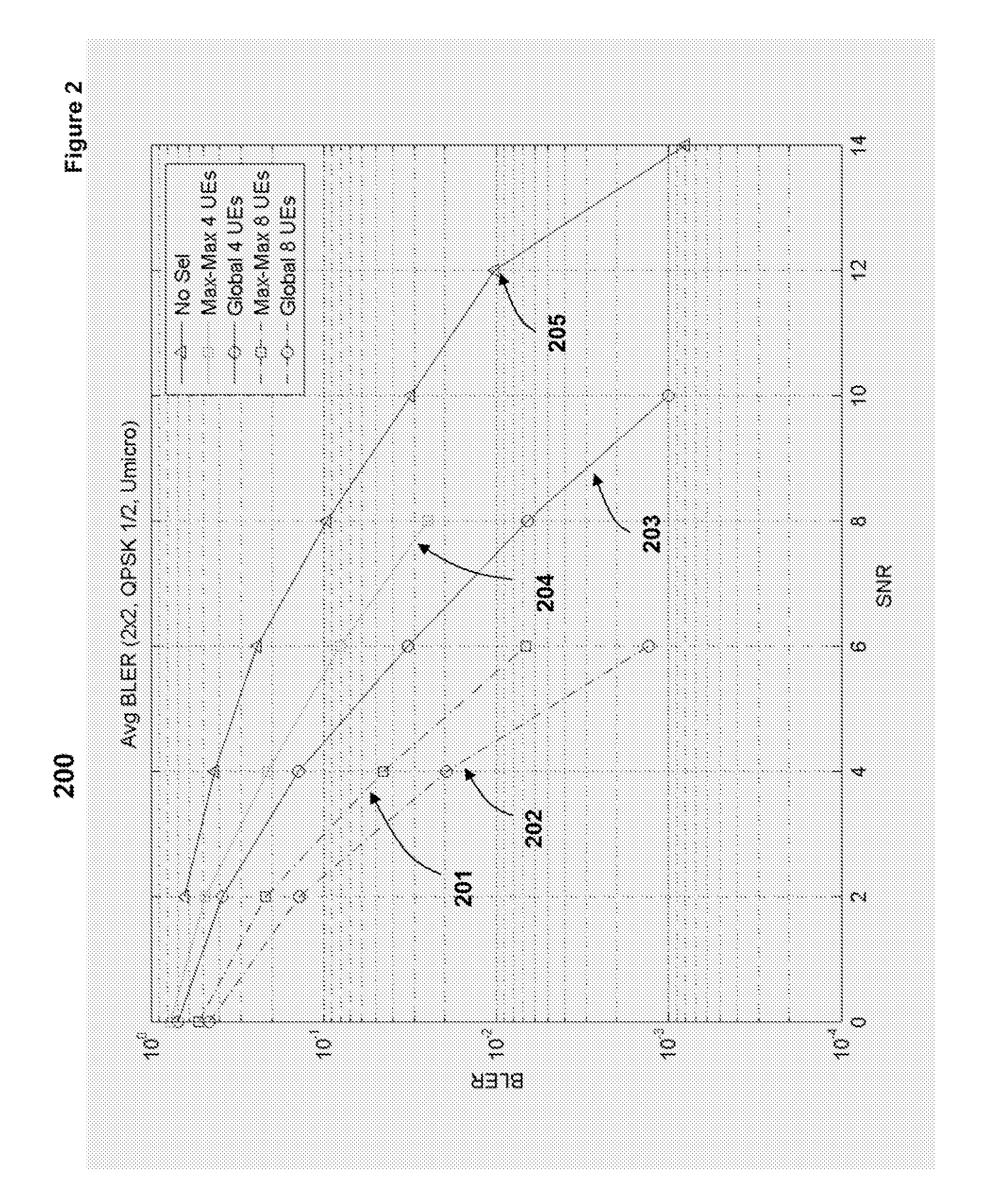Uplink spatial division multiple access (SDMA) user pairing and scheduling
a spatial division and access technology, applied in multiplex communication, orthogonal multiplex, wireless commuication services, etc., can solve the problems of system performance degradation, less system throughput or capacity
- Summary
- Abstract
- Description
- Claims
- Application Information
AI Technical Summary
Benefits of technology
Problems solved by technology
Method used
Image
Examples
Embodiment Construction
[0005]Disclosed are a method, system and communication network for transmitting information signals via uplink (UL) collaborative SDMA in a wireless communication system. An uplink scheduling (ULS) utility employs uplink signals, such as a channel quality indicator (CQI) feedback signal and / or an uplink sounding signal, to estimate a channel gain associated with a transmission path(s) of each user. Based on the estimated channel gain, the ULS utility is able to compute channel capacity. Based on capacity estimates of (1) the multiplexed user signals and (2) the individual user signals, signals are either multiplexed for UL SDMA or are transmitted individually. An optimal selection of multiplexed signals may be based upon: (1) a cross user interference estimate; and (2) a selection mechanism based on eigen-decomposition techniques. The ULS utility enables a UL scheduler to pair information signals with clear spatial distinction and minimal correlation, based on capacity evaluations.
[...
PUM
 Login to View More
Login to View More Abstract
Description
Claims
Application Information
 Login to View More
Login to View More - R&D
- Intellectual Property
- Life Sciences
- Materials
- Tech Scout
- Unparalleled Data Quality
- Higher Quality Content
- 60% Fewer Hallucinations
Browse by: Latest US Patents, China's latest patents, Technical Efficacy Thesaurus, Application Domain, Technology Topic, Popular Technical Reports.
© 2025 PatSnap. All rights reserved.Legal|Privacy policy|Modern Slavery Act Transparency Statement|Sitemap|About US| Contact US: help@patsnap.com



